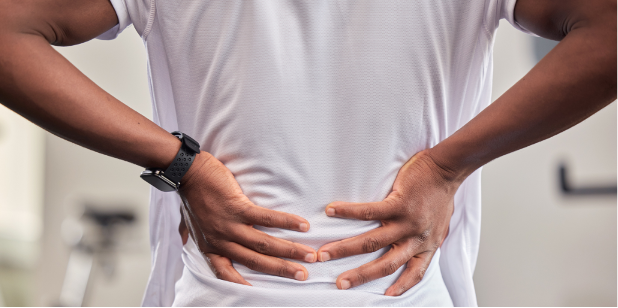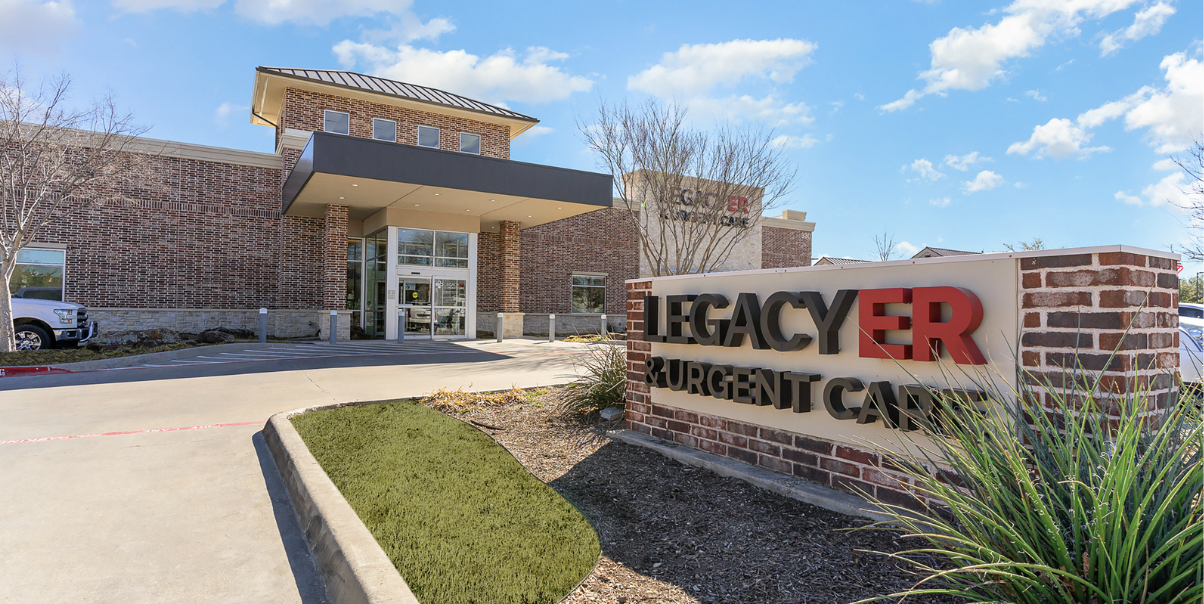Back Pain: Common Causes and When to Go to the ER

Back pain is the leading cause of disability worldwide. Whether it's a dull ache after a long day of work or sharp, shooting pains that limit mobility, understanding the symptoms, causes, and treatment options for back pain is crucial for effective management and relief.
Symptoms of Back Pain
Back pain can manifest in a variety of ways, making it sometimes difficult to pinpoint the exact cause. Common symptoms include:
- Persistent ache
- Sharp or stabbing pains
- Limited flexibility or range of motion
- Radiating pain that travels down the legs
- Muscle stiffness
- Tingling or numbness
- Difficulty standing up straight
These symptoms can range from mild discomfort to severe and debilitating pain, depending on the cause.
Common Causes of Back Pain
Understanding the underlying causes of back pain is essential for effective treatment and prevention. Some of the most common causes include muscle or ligament strain, herniated or ruptured discs, arthritis, osteoporosis, and skeletal irregularities such as scoliosis.
Poor posture, improper lifting techniques, and sedentary lifestyles can contribute to back pain by putting undue stress on the spine and surrounding muscles.
Who is at Risk for Back Pain?
Anyone can experience back pain, and almost everyone will have back pain at some point in their life. Several factors increase your risk of developing back pain and can include:
- Age: Back pain becomes more common with age, particularly after age 45.
- Fitness level: Inactivity could lead to weak muscles that may not properly support the spine (core strength). Back pain is also more likely if you exercise too strenuously after being inactive for a while (overdoing it).
- Heredity: Genetics play a role in some disorders that cause back pain.
- Job-related risk factors: Heavy lifting, pushing, pulling, or twisting can injure the back. A desk job may also play a role, especially if you have poor posture or sit in an uncomfortable chair all day.
- Stress level: If you chronically have poor sleep, depression, or anxiety, back pain can be more frequent and more severe.
- Weight gain: A diet high in calories and fat, combined with an inactive lifestyle, can lead to obesity, which puts stress on the back.
Treatment for Back Pain
Fortunately, many treatment options are available to relieve back pain and improve quality of life. The appropriate treatment will depend on the severity and underlying cause of the pain.
For mild to moderate back pain, conservative treatments such as over-the-counter pain relievers, physical therapy, and hot or cold therapy may be sufficient. These methods can help reduce inflammation, improve muscle strength and flexibility, and temporarily relieve pain.
In cases where conservative treatments are ineffective, your healthcare provider may recommend prescription medications, such as muscle relaxants or anti-inflammatory drugs, to manage pain and inflammation.
For more severe or persistent back pain, more invasive treatments such as steroid injections or surgery may be necessary to address underlying structural issues or nerve compression.

When is Back Pain an Emergency?
While most cases of back pain can be managed with at-home treatments, there are certain red flags that signal the need for immediate attention. If you experience any of the following symptoms along with back pain, seek emergency care:
- Fever, unexplained weight loss, or other signs of infection
- Loss of bowel or bladder control
- Numbness, tingling, or weakness in the legs
- Severe pain following an injury, especially if accompanied by swelling or deformity
Ignoring these warning signs could lead to serious complications, so it's important to seek medical attention immediately.
Preventing Back Pain
You can take steps to improve your health and lower your chance of developing chronic or long-lasting back pain.
To keep the back healthy and strong:
- Build muscle strength and flexibility. Abdominal and back muscle exercises, which strengthen the core, and help condition these muscles so that they work together to support the back. Avoid movements that twist or strain the back.
- Exercise. Regular low-impact aerobic activities, those that don't strain or jolt the back, can increase strength and endurance in the back and allow the muscles to work better. Walking, bicycling, and swimming are good choices.
- Maintain a healthy weight. Being overweight strains back muscles.
- Quit smoking. Smoking increases the risk of low back pain. The risk increases with the number of cigarettes smoked per day, so quitting should help reduce this risk.
- Sit smart. Choose a seat with good lower back support, armrests, and a swivel base. Placing a pillow or rolled towel in the small of the back can maintain its normal curve. Keep knees and hips level. Change position frequently, at least every half-hour.
- Stand smart. Don't slouch. Maintain a neutral pelvic position. When standing for long periods, place one foot on a low footstool to take some of the load off the lower back. Alternate feet. Good posture can reduce the stress on back muscles.
If you or someone you know is experiencing persistent or severe back pain, don't hesitate to seek professional medical advice. A healthcare provider can provide a comprehensive evaluation and develop a personalized treatment plan to address your specific needs.

Back Pain Treatment at Legacy ER & Urgent Care
Legacy ER & Urgent Care is here to meet your medical care needs by providing affordable pricing and quality care. As part of Intuitive Health’s innovative hybrid model ER and urgent care system, patients are only billed for the level of care they receive from professional and highly trained medical staff. With six facilities located in the Dallas-Fort Worth metroplex, emergent and non-emergent care are accessible and transparent, focusing on superb customer service.
Legacy ER & Urgent Care has six convenient locations in the DFW area:
- Allen – Legacy ER & Urgent Care is located at 1310 W. Exchange Pkwy Allen, TX 75013, and may be reached at 972-526-5819.
- Coppell – Legacy ER & Urgent Care is located at 330 S Denton Tap Rd Coppell, TX 75019 and may be reached at 469-702-9917.
- Frisco East – Legacy ER & Urgent Care is located at 16151 Eldorado Pkwy Frisco, TX 75035 and may be reached at 972-526-7009.
- Frisco West – Legacy ER & Urgent Care is located at 9205 Legacy Dr. Frisco, TX 75033, and may be reached at 972-526-7020.
- McKinney – Legacy ER & Urgent Care is located at 2810 Hardin Blvd McKinney, TX 75072 and may be reached at 972-573-6688.
- North Richland Hills – Legacy ER & Urgent Care is located at 8950 N. Tarrant Pkwy North Richland Hills, TX 76182, and may be reached at 817-663-1247.
